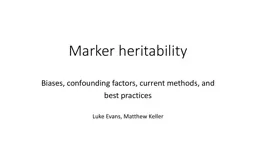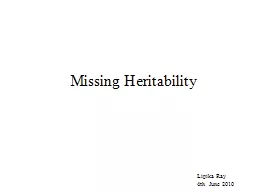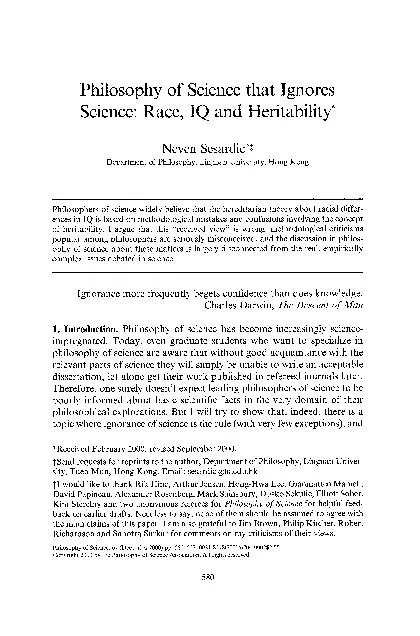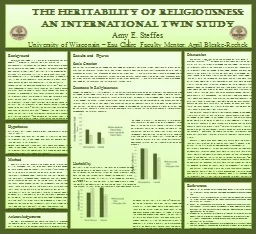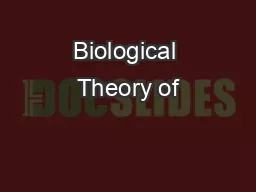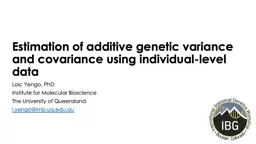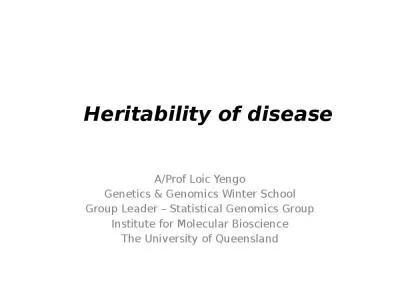PPT-Marker heritability
Author : myesha-ticknor | Published Date : 2017-05-02
Biases confounding factors current methods and best practices Luke Evans Matthew Keller Background What Matt Keller presented GREMLSC single genetic relatedness
Presentation Embed Code
Download Presentation
Download Presentation The PPT/PDF document "Marker heritability" is the property of its rightful owner. Permission is granted to download and print the materials on this website for personal, non-commercial use only, and to display it on your personal computer provided you do not modify the materials and that you retain all copyright notices contained in the materials. By downloading content from our website, you accept the terms of this agreement.
Marker heritability: Transcript
Download Rules Of Document
"Marker heritability"The content belongs to its owner. You may download and print it for personal use, without modification, and keep all copyright notices. By downloading, you agree to these terms.
Related Documents

